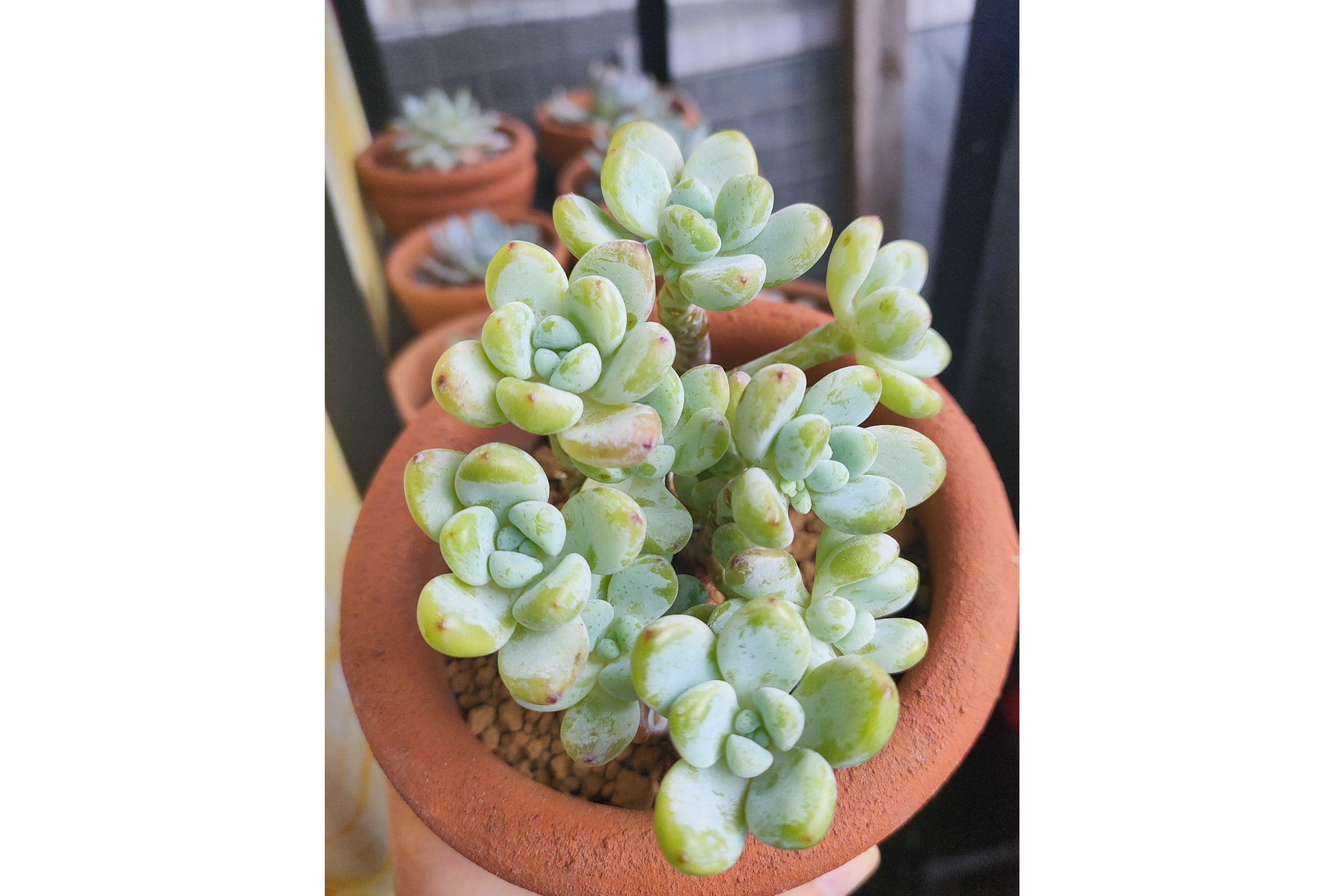Stonecrop
(Sedum clavatum)

Description
Sedum clavatum is a succulent plant that grows in compact rosettes that elongate into long stems with time. Originally identified growing in southern Mexico, S. clavatum produces white, star-shaped flowers in mid to late spring to early summer. They are often grown as decorative plants in rock gardens. Like almost all succulents, S. clavatum needs to be protected from frost and is hardy to 32 °F (0 °C). It grows 4 to 6 inches tall at mature height and 8 inches wide. S. clavatum is an annual that needs average watering and is categorized as fairly easy to maintain. It flourishes in semi-arid and arid climates from southern California to mid-Texas, but can be grown elsewhere given proper precautions. Sedum clavatum require porous, well-draining soil and 4–6 hours of sunlight. Plants should be watered when the soil is dry, but over-watering is to be avoided. Sedum is a large genus of flowering plants in the family Crassulaceae, members of which are commonly known as stonecrops. The genus has been described as containing up to 600 species, subsequently reduced to 400–500. They are leaf succulents found primarily in the Northern Hemisphere, but extending into the southern hemisphere in Africa and South America. The plants vary from annual and creeping herbs to shrubs. The plants have water-storing leaves. The flowers usually have five petals, seldom four or six. There are typically twice as many stamens as petals. Various species formerly classified as Sedum are now in the segregate genera Hylotelephium and Rhodiola. Well-known European species of Sedum are Sedum acre, Sedum album, Sedum dasyphyllum, Sedum reflexum (also known as Sedum rupestre) and Sedum hispanicum. Sedum is a genus that includes annual, biennial, and perennial herbs. They are characterised by succulent leaves and stems. The extent of morphological diversity and homoplasy make it impossible to characterise Sedum phenotypicaly. Distributed in mainly in temperate to subtropical climates the Northern hemisphere, extending to the Southern hemisphere in Africa and South America, being most diverse in the Mediterranean, Central America, Himalayas, and East Asia. In this respect, the two subgenera differ. Subgenus Sedum having a centre of diversity in Mexico, and Gormania in Eurasia with a secondary centre in N America.
Taxonomic tree:







